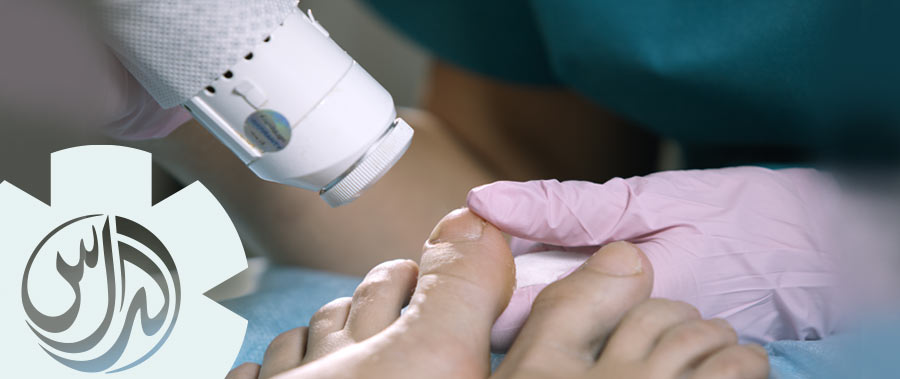Nail Fungal infection (Onychomycosis)
By Dr. Sergio Mazzei, General Surgeon

Nail Fungal Infections, also known as “onychomycosis,” are very common. These infections may cause nails to become discolored, thick, fragile, or cracked. The nail can come off from the nail bed.
Who can get nail fungus?
Although nail fungus is common and anyone can get it, some people have a higher risk of developing a fungal nail infection. Factors like age, health, and lifestyle can all contribute to an increased risk.
- Athlete’s foot or another skin fungus in the past
- Currently undergoing chemotherapy for cancer
- Diabetes
- History of a previous nail infection
- Recent nail injury or surgery
- Family members who often get nail infections
- Poor blood circulation
- Psoriasis
- Organ transplant recipient
- Weakened immune system
Preventing fungal nail infections:
Fungal nail infections usually develop when your feet are constantly sweaty and moist. Wearing sneakers for extended periods with sweaty feet raises the risk of infection. You can get it if your nails stay wet often or if you wear sweaty socks and shoes a lot.
- Small cut in the skin surrounding your nail
- Crack in your nail
- Gap between the nail and finger (or toe)
- treat athlete’s foot as soon as possible to prevent it from spreading to the nails
- keep your feet clean and dry
- wear clean socks every day
- try to wear flip-flops in showers or at the gym or pool
- throw out old shoes
Treatment:
Treatment depends on how severe your condition is and the specific type of fungus causing it. Your doctor might recommend antifungal medications, either in oral form or as topical treatments applied directly to the nail. Removing the nail temporarily might be suggested to apply the antifungal medicine directly to the infection under the nail.
The most effective yet least used option is surgery to permanently remove the nail from its root. Your doctor can perform nail surgery right in their office. Initially, they’ll numb the skin around your nail. It’s very similar to numbing your gums at the dentist’s. During the surgery, you’ll be conscious but won’t experience any pain. After numbing the area, your doctor removes either the entire nail or just the infected portion using special tools.
The surgery usually takes less than an hour. Although it’s an uncommon surgery, but it’s an option when other treatments don’t work. When you have your nail taken out, a new one usually grows back, but usually slowly. Your nail might take up to 18 months to fully grow back.
Following the surgery, your doctor typically applies antibiotic cream and a bandage to your nail bed. This antibiotic cream helps prevent bacterial infections.
If you suspect a Nail Fungal Infection or need personalized treatment advice, schedule a consultation with Al Das Medical Clinic!
Book a visit 04 452 9998 or by filling the online form